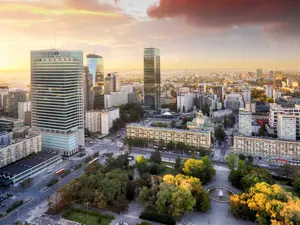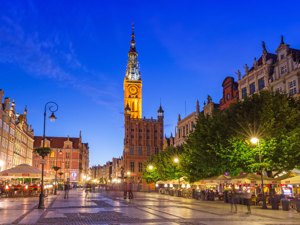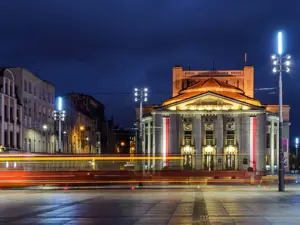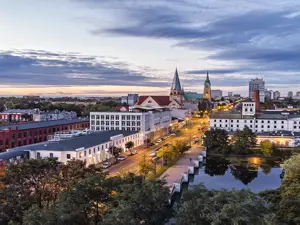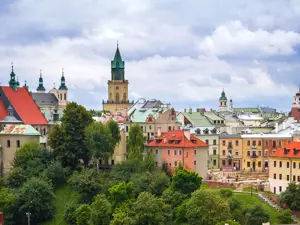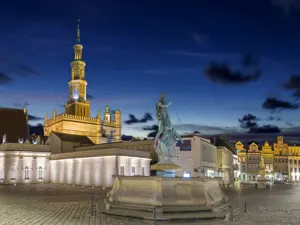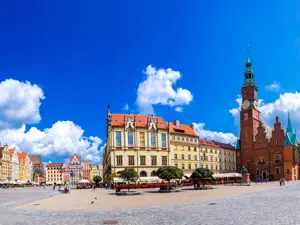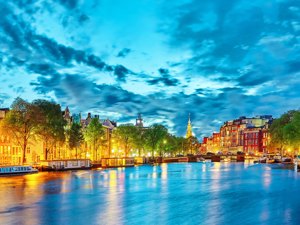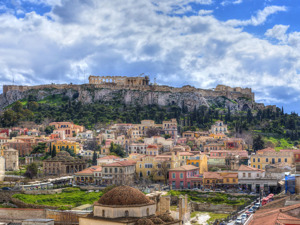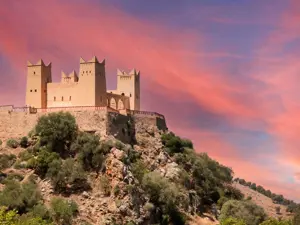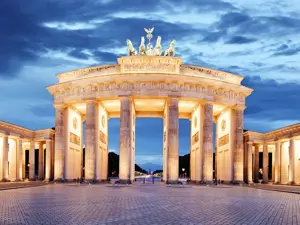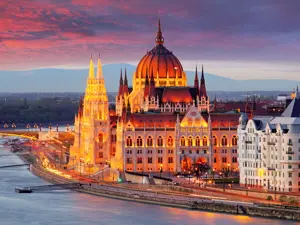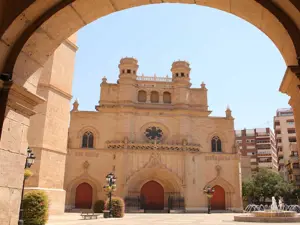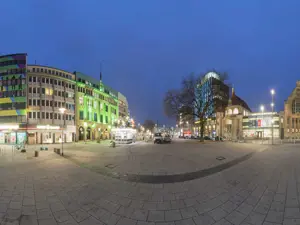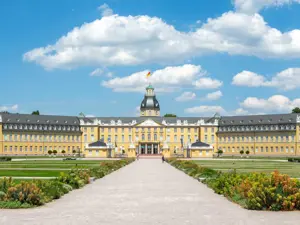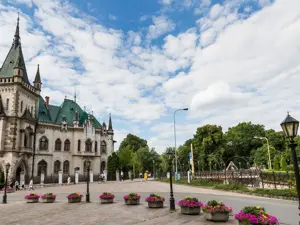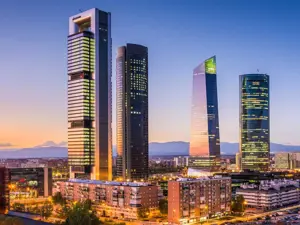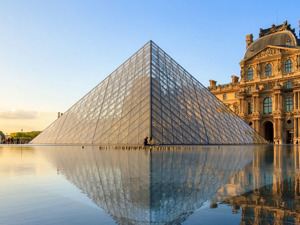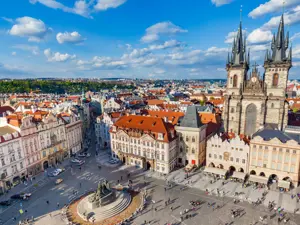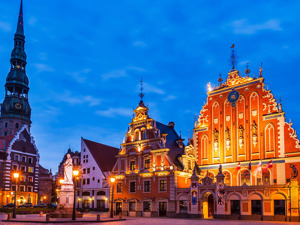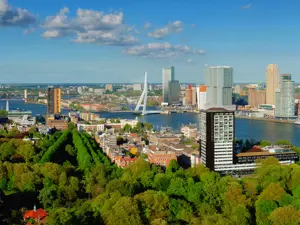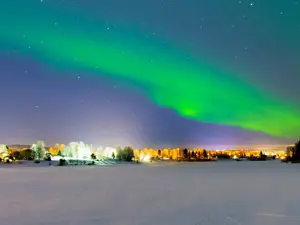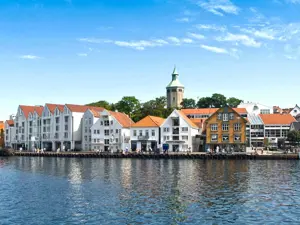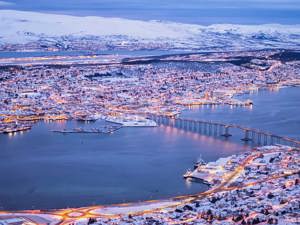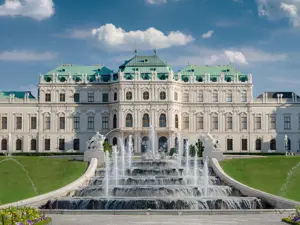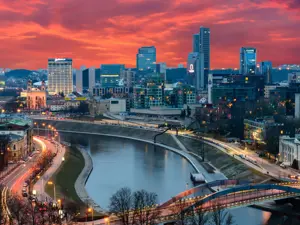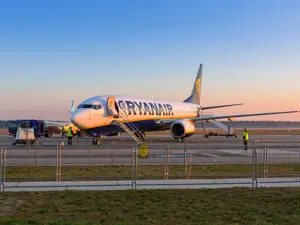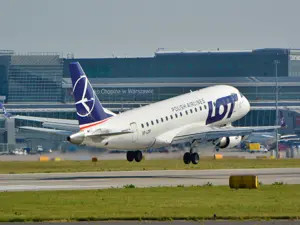The Paris of the North
Warsaw has always successfully combined old and new and in spite of its troubled history is today a lively and charming city. This splendid capital in past centuries was known as the “Paris of the north”, because of its wide tree-line avenues and sumptuous Neoclassical palaces as well as the artistic and cultural fervour that permeated the streets.
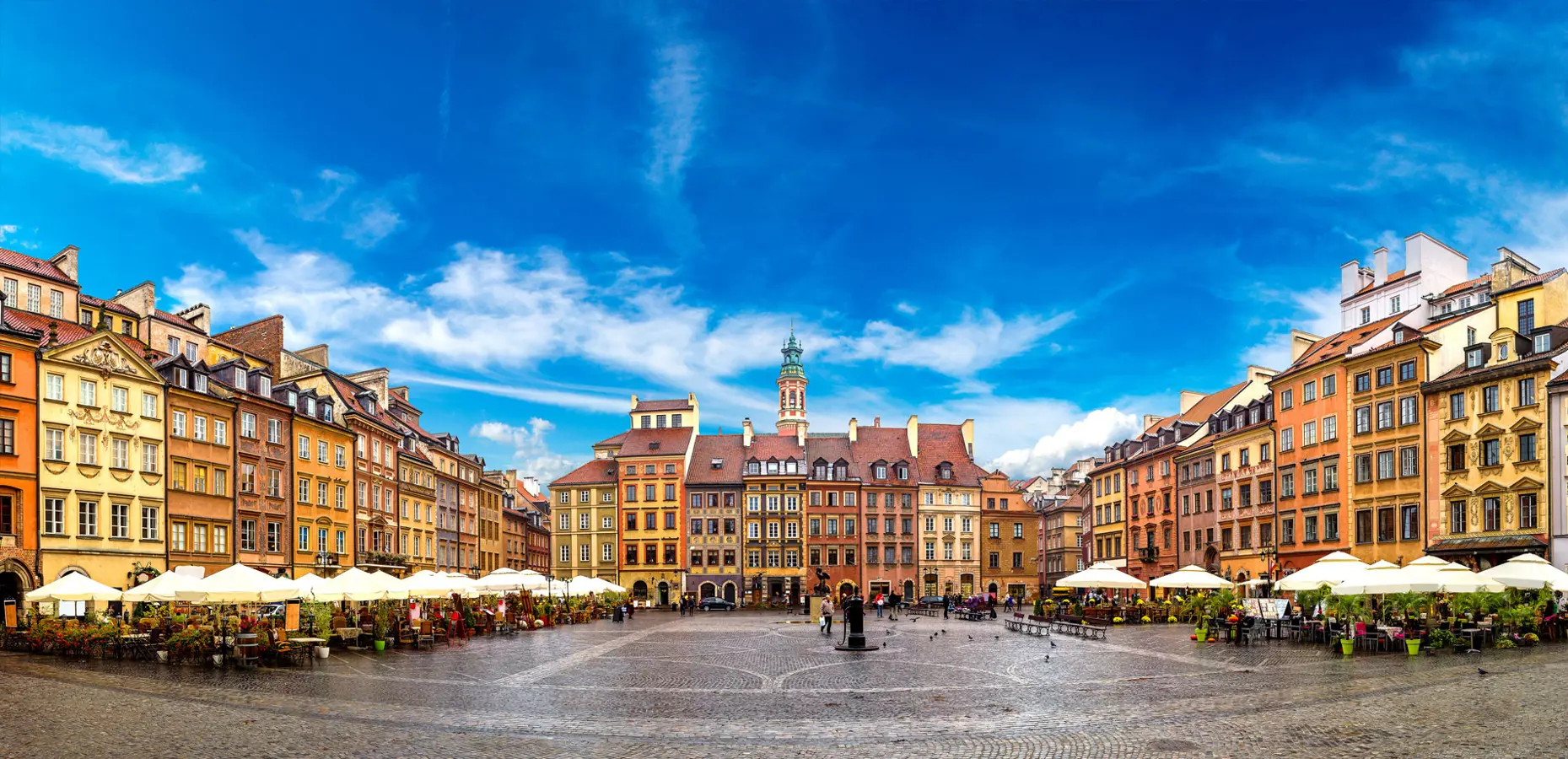
Warsaw. Copyright © Sisterscom.com / Shutterstock
Thanks to this lively atmosphere, Warsaw is not just the administrative centre of Poland, but rather the beating heart of its art and history.
The historic center of Warsaw
The city of Warsaw was the stage for great historical events. Unfortunately it was heavily bombed during World War II and many of its buildings were destroyed. However, with the passion of its inhabitants, the historic centre of the Old Town was faithfully restored. To reconstruct the capital, the people used several paintings attributed to Canaletto (and in reality painted by the Venetian Bellotto), a series of landscapes that depicted the buildings of Warsaw with exquisite detail, which would serve as models for the reconstruction. The rebuilding work was so perfect that the Old Town of Warsaw is today a UNESCO World Heritage Site.
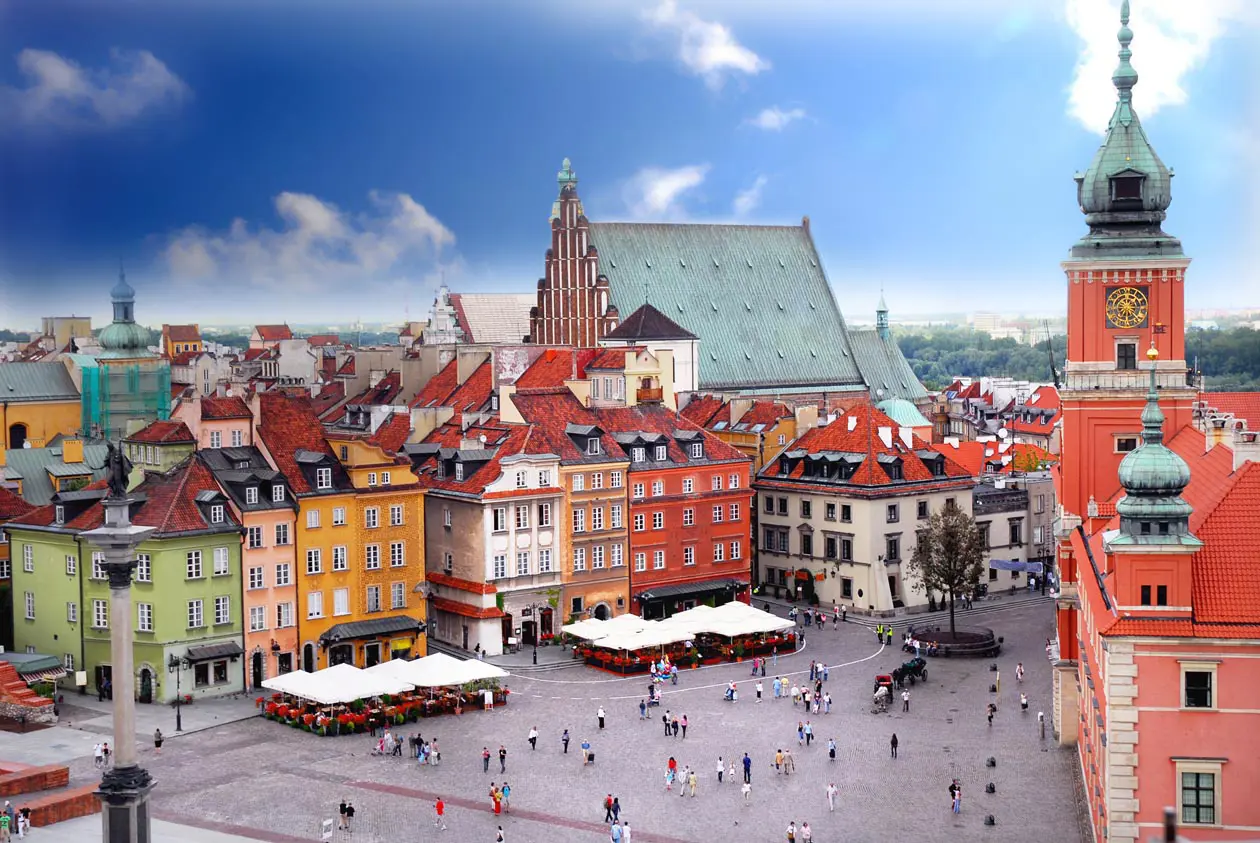
The historic centre, Warsaw. Copyright © Sisterscom.com / Shutterstock
The Royal Route of Warsaw
The best way to begin your visit to Warsaw is to follow the “Royal Route”: the old main street along which you’ll find most of the historic buildings of the capital.
It begins in the Old Town with the Royal Castle, and ends at the park of Łazienki Królewskie (Royal Baths) and the Belvedere Palace. The entrance to the Old Town is the majestic Barbican which divide the town walls in half. The Market Square (Rynek Starego Miasta), a symbol of Warsaw, sits in the centre of the Old Town. Here you can find various art galleries, restaurants and coffee houses that were once the meeting places of painters and portraitists. Nearby, in the square of the same name, stands the Royal Castle, and further ahead the tall column of Zygmunt III Waza, the king who in 1596 transferred the capital of Poland from Krakow to Warsaw.
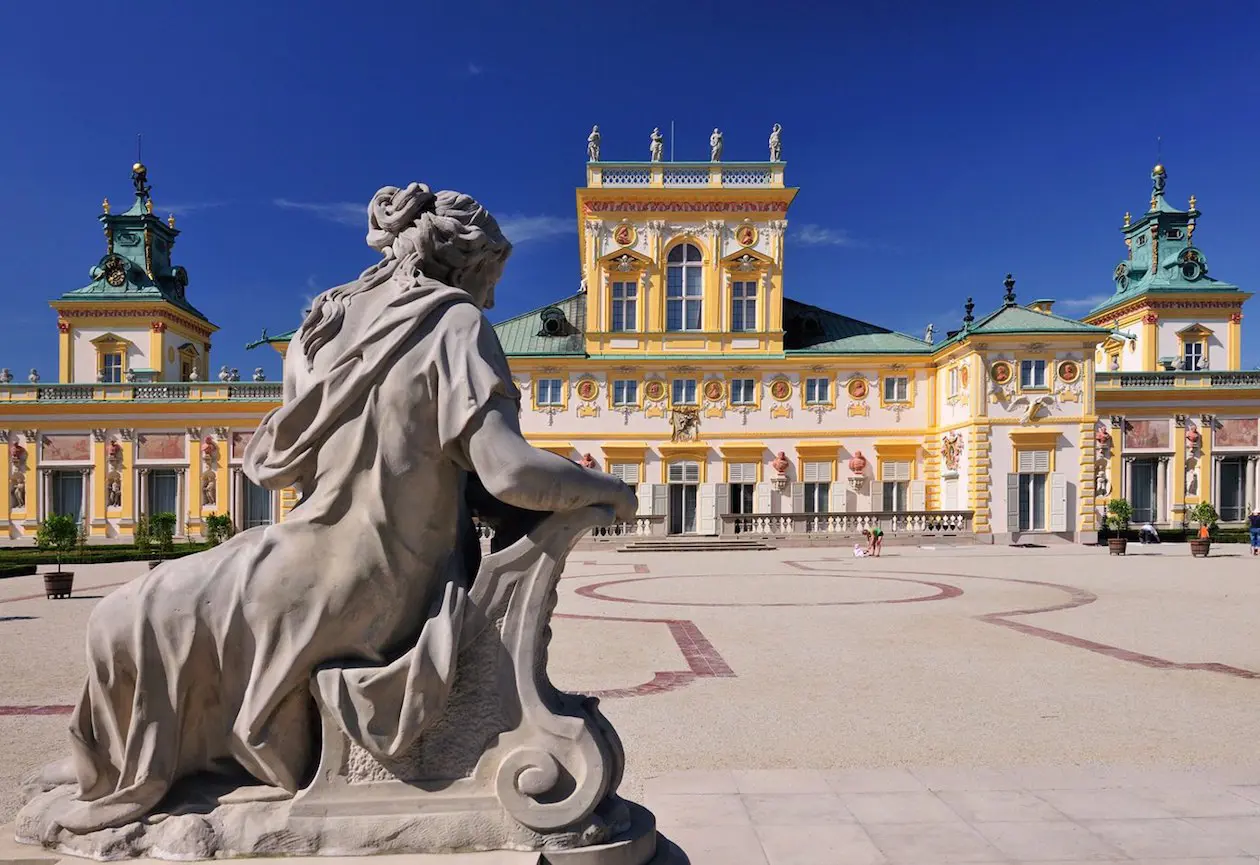
Warsaw. Copyright © Sisterscom.com / Shutterstock
The most beautiful street in Warsaw is most certainly Ujazdowski Avenue, with its splendid buildingshousing many of the foreign embassies, the Botanical Garden and the Park of Łazienki Królewskie. This park is definitely worth a stroll around. From Spring to late Autumn the music of Chopin is played beneath the monument of the great composer by pianists, some of which are very well known.
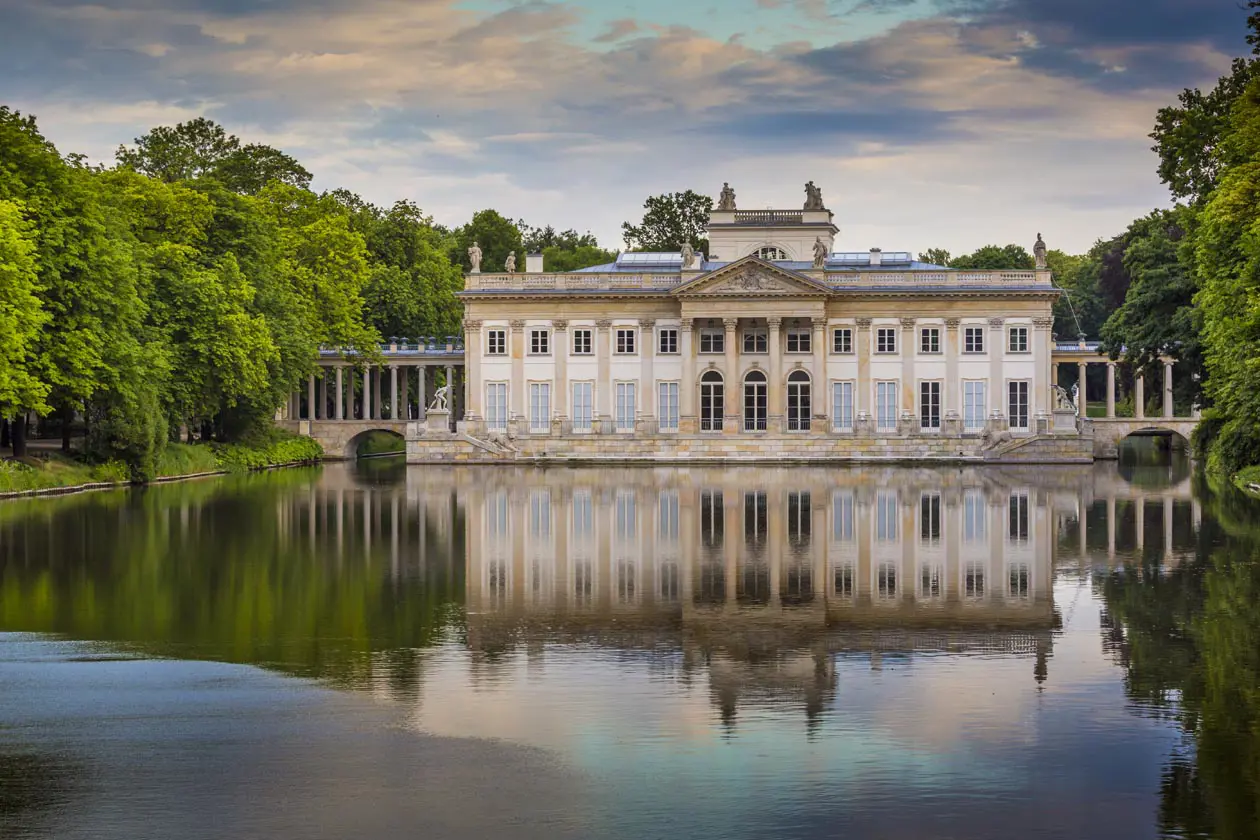
Palace on the Water, Warsaw. Copyright © Sisterscom.com / Shutterstock
Among the many enchanting historic buildings found inside the park, those of particular interest are the Palace on the Water, whose white colour is reflected in the waters of the small lake, the summer amphitheatre and the Myśliewicki Palace. The Royal Route ends at the Belvedere Palace, which until 1994 was the residence of the head of the Polish State.
The Jewish Cemetery and the Powazki Cemetery (Cmentarz Powązkowski) are also of great historic value, as is the place where the old Jewish Ghetto of Warsaw was found, which today features buildings in socialist realism style. One of the most majestic example of this style is the Palace of Culture of Science, which is situated in the heart of the modern area of Warsaw.
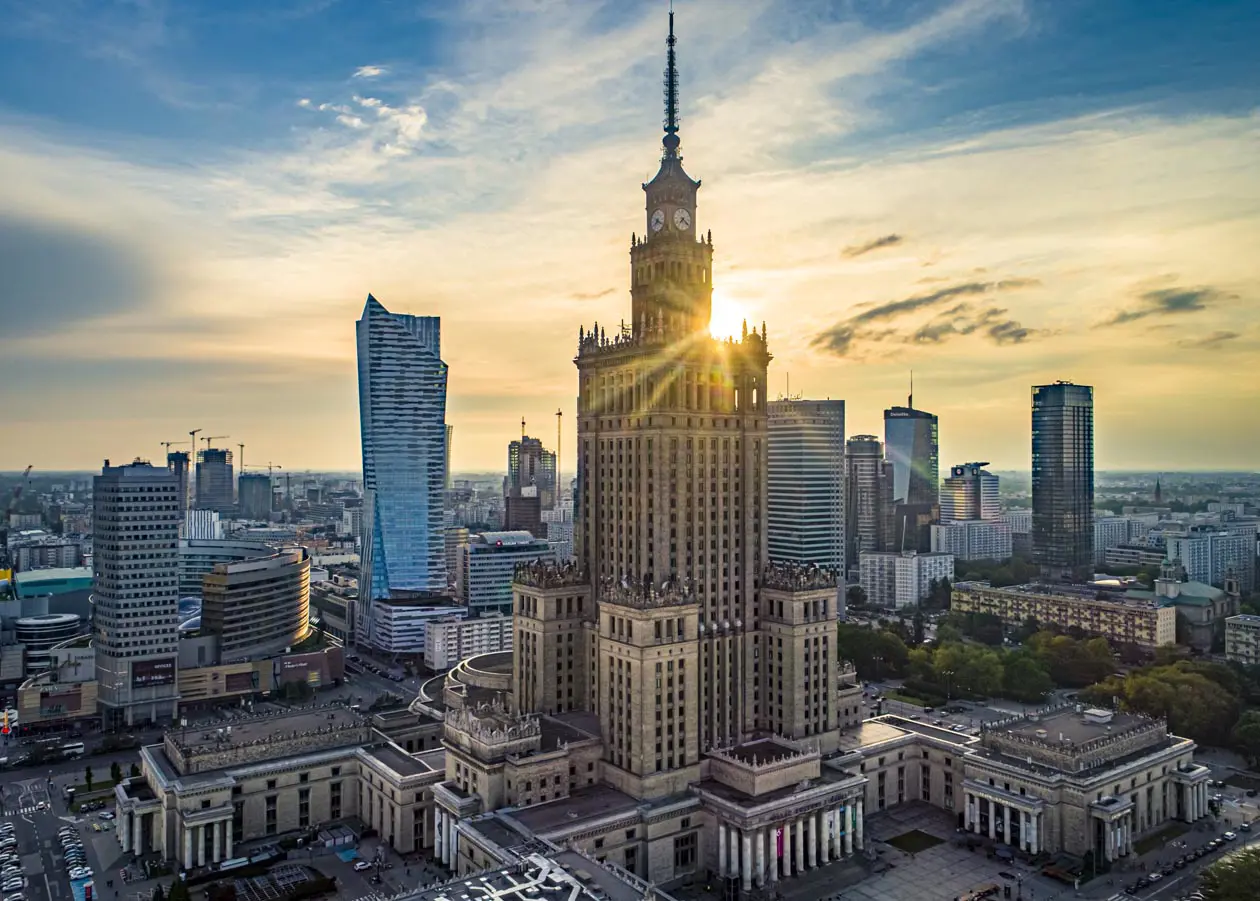
Warsaw. Editorial use photo: Copyright © Sisterscom.com / DroneInWarsaw / Depositphotos
At 234 metres high, it dominates the city. A wonderful view of the city crossed by the sinuous course of the River Vistula can be enjoyed by the thirtieth floor of the building. The Prague district is located overlooking the right bank of the Vistula, which was once the place of coronations of kings and now an area loved by artists where night life is concentrated.
Polish cuisine
Polish cuisine has different characteristics depending on its regions. In the northern Poland, rich in lakes, you will find mainly fish-based dishes; in Masovia and Podhale, soups are renowned, such as zurek (made of rye flour with sausage and eggs).



Copyright © Sisterscom.com / Shutterstock
Also the kwasnica (sauerkraut, potatoes and bacon); Wielkopolska is known for duck dishes; in Suwalki potatoes are the protagonists of many recipes. You must try the famous pierogi with different fillings (meat, sauerkraut, mushrooms, potatoes and cheese).
Text by Lea Tocchi
Updated by Alisè Vitri
Avion Tourism Magazine
Photos: Copyright © Sisterscom.com / Shutterstock
Photos: Copyright © Sisterscom.com / Shutterstock
Tourism Board
www.warsawtour.pl
Partnership with GetYourGuide
Where to sleep in Warsaw
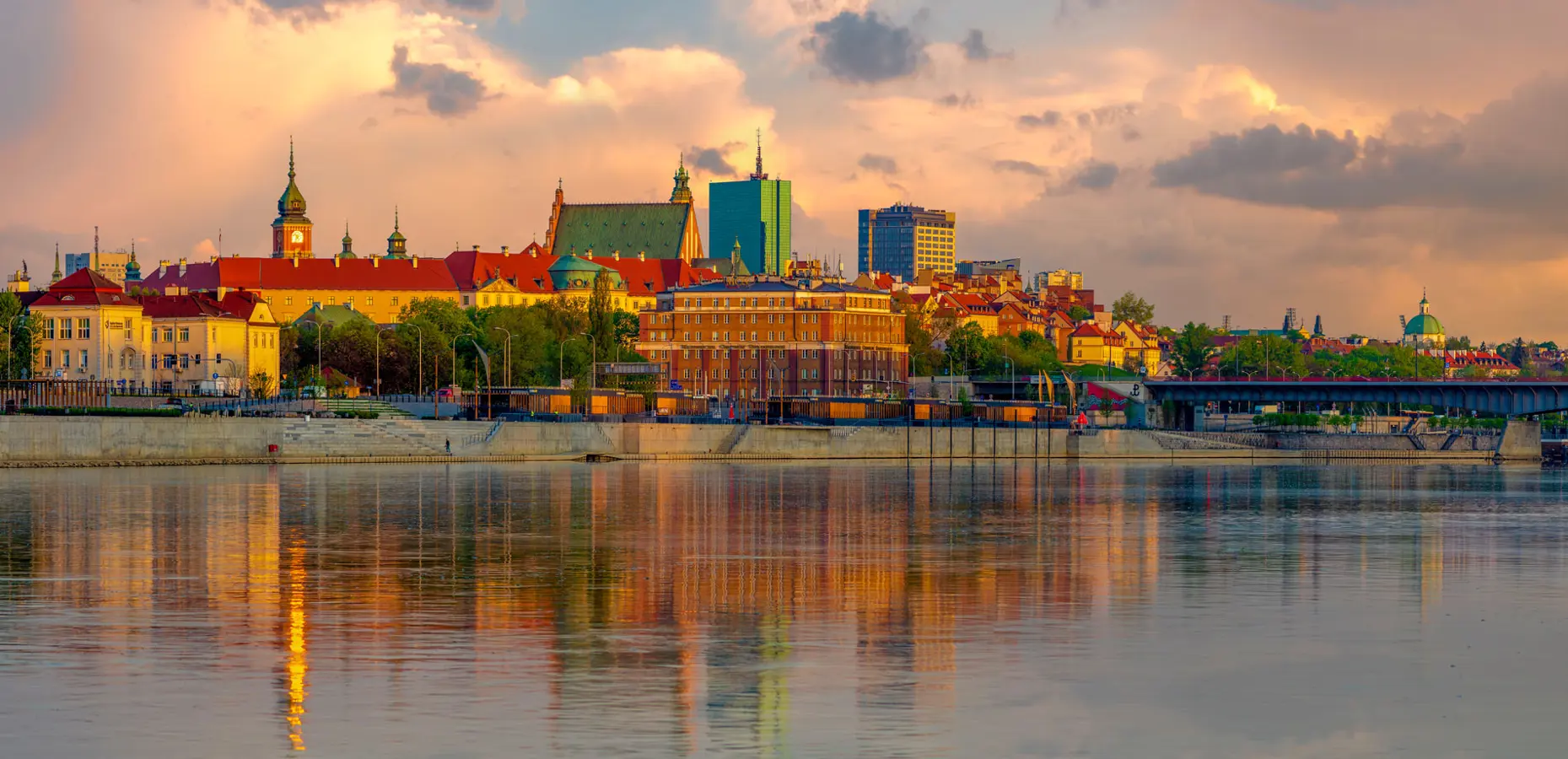
Warsaw. Copyright © Sisterscom.com / Shutterstock
Warsaw is a welcoming city and offers different possibilities for accommodation.
To find the ideal hotel and the best offers you can do a search for the stars but also for districts or landmarks.
DISTRICTS
Hotels in the districts
LANDMARKS
Hotels in tourist areas
WHERE TO GO in Warsaw
Monuments in Warsaw
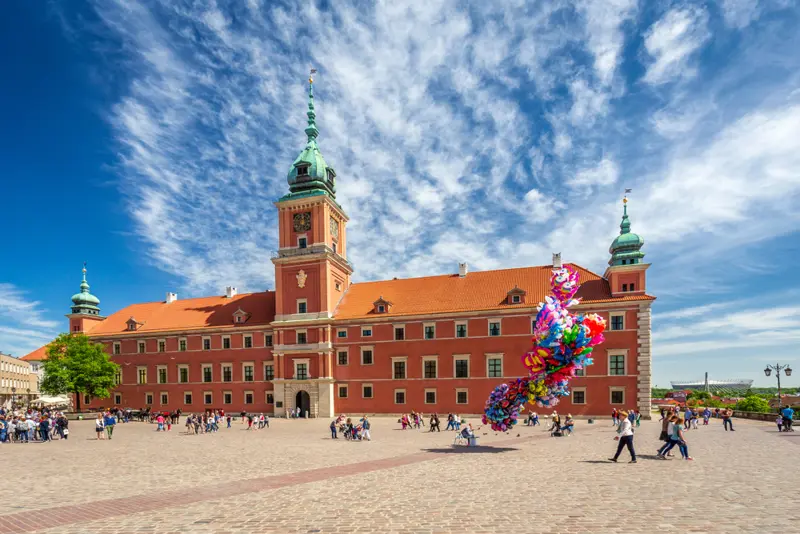
Warsaw. Copyright © Sisterscom.com / Shutterstock
ROYAL CASTLE (ZAMEK KRÓLEWSKI)
It was the former residence of Polish kings; destroyed during World War II by the Nazis, the palace has been restored thanks to the efforts of the entire nation. The interior decoration features salvaged works of art from the old Castle. Worth seeing are the Great and the Royal Suite with the Canaletto Halls (22 original paintings) and two Rembrandt's paintings.
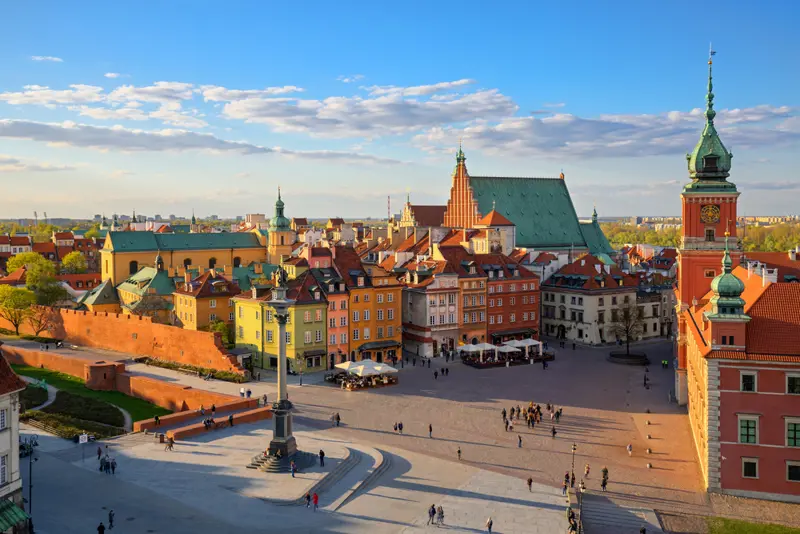
Warsaw. Copyright © Sisterscom.com / Shutterstock
OLD CITY
UNESCO World Heritage Site, the historic center of Warsaw is characterized by colorful terraced houses, narrow streets and the Market Square. Not to be missed: the Barbican, the bell of Kanonia Street and the walls of the old city.
Museums in Warsaw
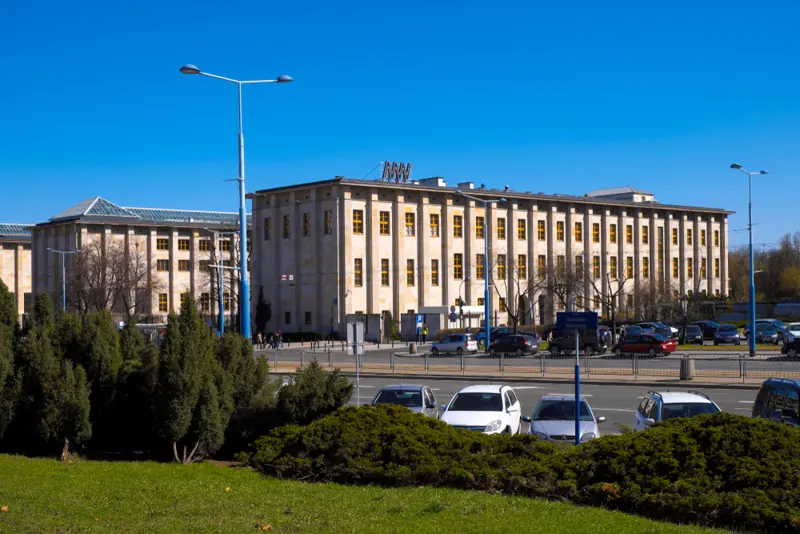
Warsaw. Copyright © Sisterscom.com / Shutterstock
NATIONAL MUSEUM (MUZEUM NARODOWE)
One of the oldest, richest in exhibits and most innovative art museums in Poland.
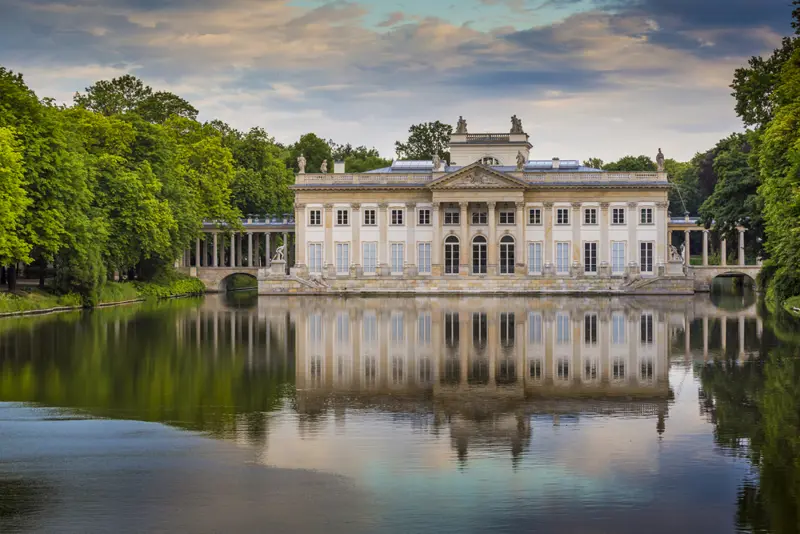
Warsaw. Copyright © Sisterscom.com / Shutterstock
ŁAZIENKI KRÓLEWSKIE MUSEUM
Łazienki Królewskie Museum is a Palace-Garden complex which includes a park (76 hectares) and numerous historical objects. The park was created using the formerly wildly growing forest, allowing the animals to be 'detained' under natural conditions.
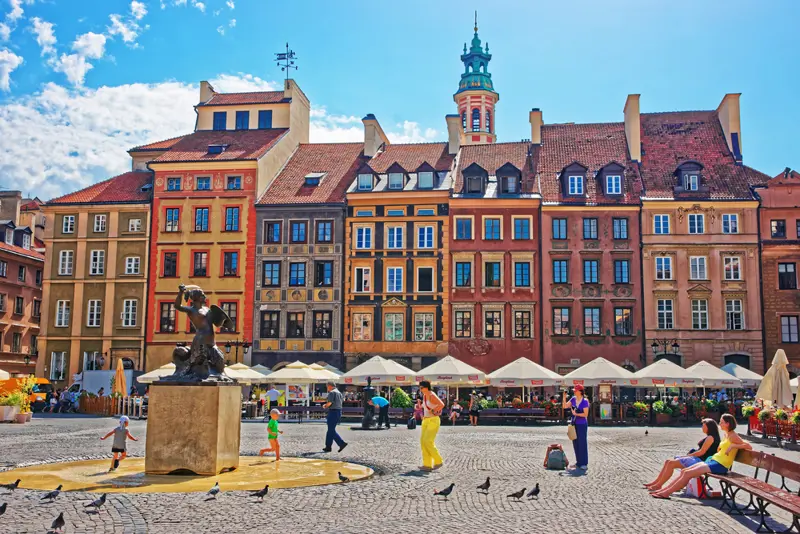
Warsaw. Copyright © Sisterscom.com / Shutterstock
HISTORICAL MUSEUM OF WARSAW
(MUZEUM HISTORYCZNE M.ST. WARSZAWY)
The museum is housed in 11 tenements, all in the Old Town, eight on the Old Town Square (Rynek Starego Miasta) and the last three on Nowomiejska Street. Its collection includes archaeological exhibits, paintings, graphics, iconography, sculpture, decorative arts, numismatics, plans and drawings. Some of them show the history of the city since its founding to modern times.
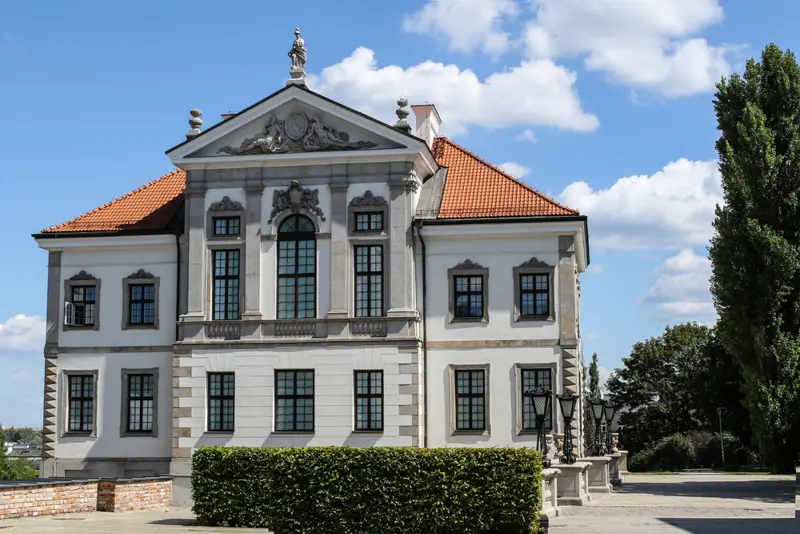
Warsaw. Copyright © Sisterscom.com / Shutterstock
FRYDERYK CHOPIN MUSEUM
(MUZEUM FRYDERYKA CHOPINA)
The museum’s exhibits the world’s richest and most varied collection of memorabilia related to both Chopin as an individual, and his work. The collection includes manuscripts and printed copies of Chopin’s works, his correspondence, autographs, notes, works of art, personal items belonging to the composer and his piano.
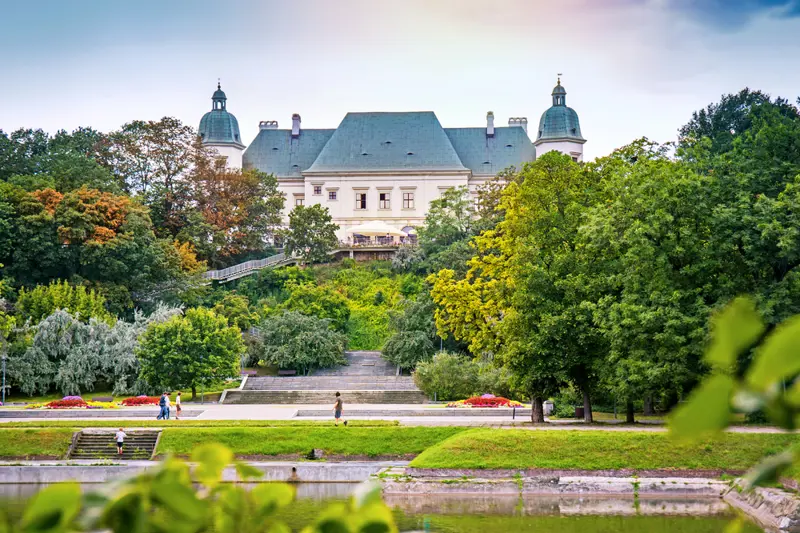
Warsaw. Copyright © Sisterscom.com / Shutterstock
CENTRE FOR CONTEMPORARY ART UJAZDOWSKI CASTLE
(CENTRUM SZTUKI WSPÓŁCZESNEJ ZAMEK UJAZDOWSKI)
(CENTRUM SZTUKI WSPÓŁCZESNEJ ZAMEK UJAZDOWSKI)
The Centre for Contemporary Art Ujazdowski Castle is a place for the creation, presentation and documentation of contemporary art in all of its manifestations.
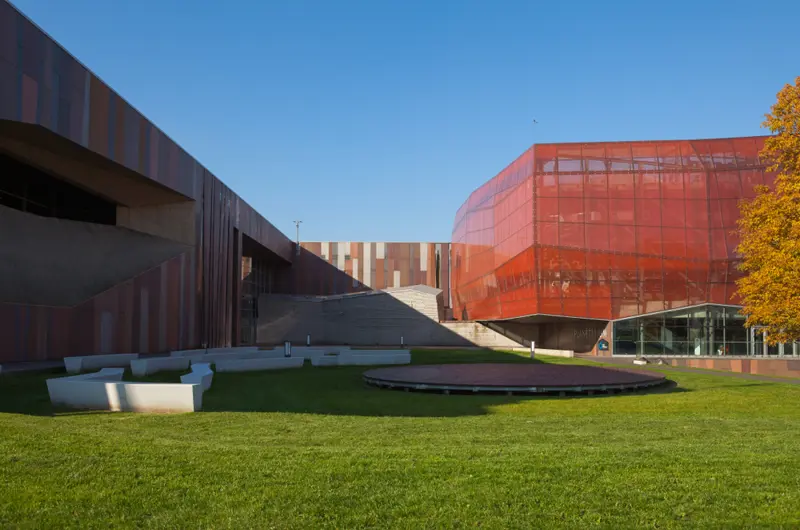
Warsaw. Copyright © Sisterscom.com / Shutterstock
COPERNICUS SCIENCE CENTRE
(CENTRUM NAUKI KOPERNIK)
Dedicated to the famous polish astronomer, in the centre you can experiment complicated natural phenomena. The experiments are so exciting that several hours should be planned for them. There is no prescribed visiting route, the visitors themselves decide, what they want to see and when.
Excursions in Warsaw

Warsaw. Copyright © Sisterscom.com / Shutterstock
TORUN
Torun, located in the heart of Poland, is a charming city renowned for its medieval old town, a UNESCO World Heritage Site. Known as the birthplace of Nicolaus Copernicus, it offers visitors a rich scientific and cultural history. Don't miss the beautiful Cathedral of St. John the Baptist and St. John the Evangelist and the picturesque central market.
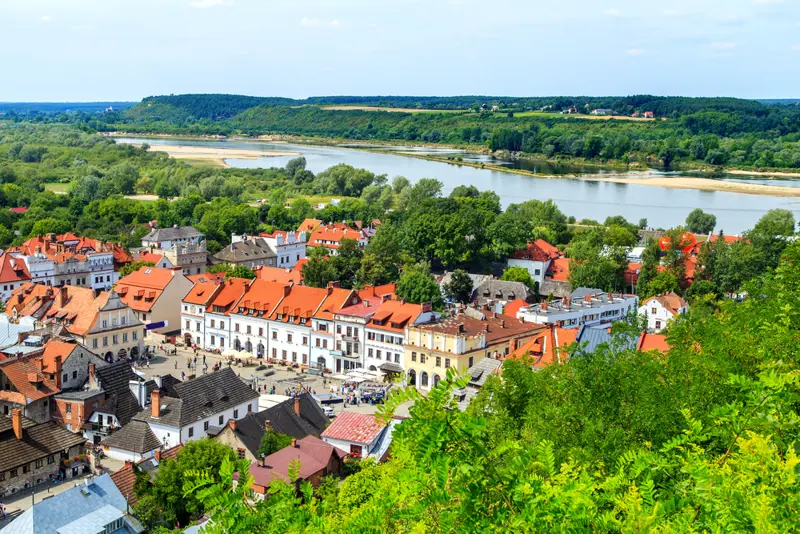
Warsaw. Copyright © Sisterscom.com / Shutterstock
KAZIMIERZ DOLNY
Kazimierz Dolny, located on the banks of the Vistula River, is a picturesque Polish town known for its charming old town and well-preserved Renaissance houses. Famous for its artistic and cultural scene, the town hosts numerous art festivals and outdoor markets. A must-see attraction is the Parish Church of St. John the Baptist and St. Bartholomew, with its stunning Baroque interiors.
Partnership with GetYourGuide
Discover all Tours
News & Useful info
Shopping
You might be interested in
Other destinations
Airports nearby Warsaw











